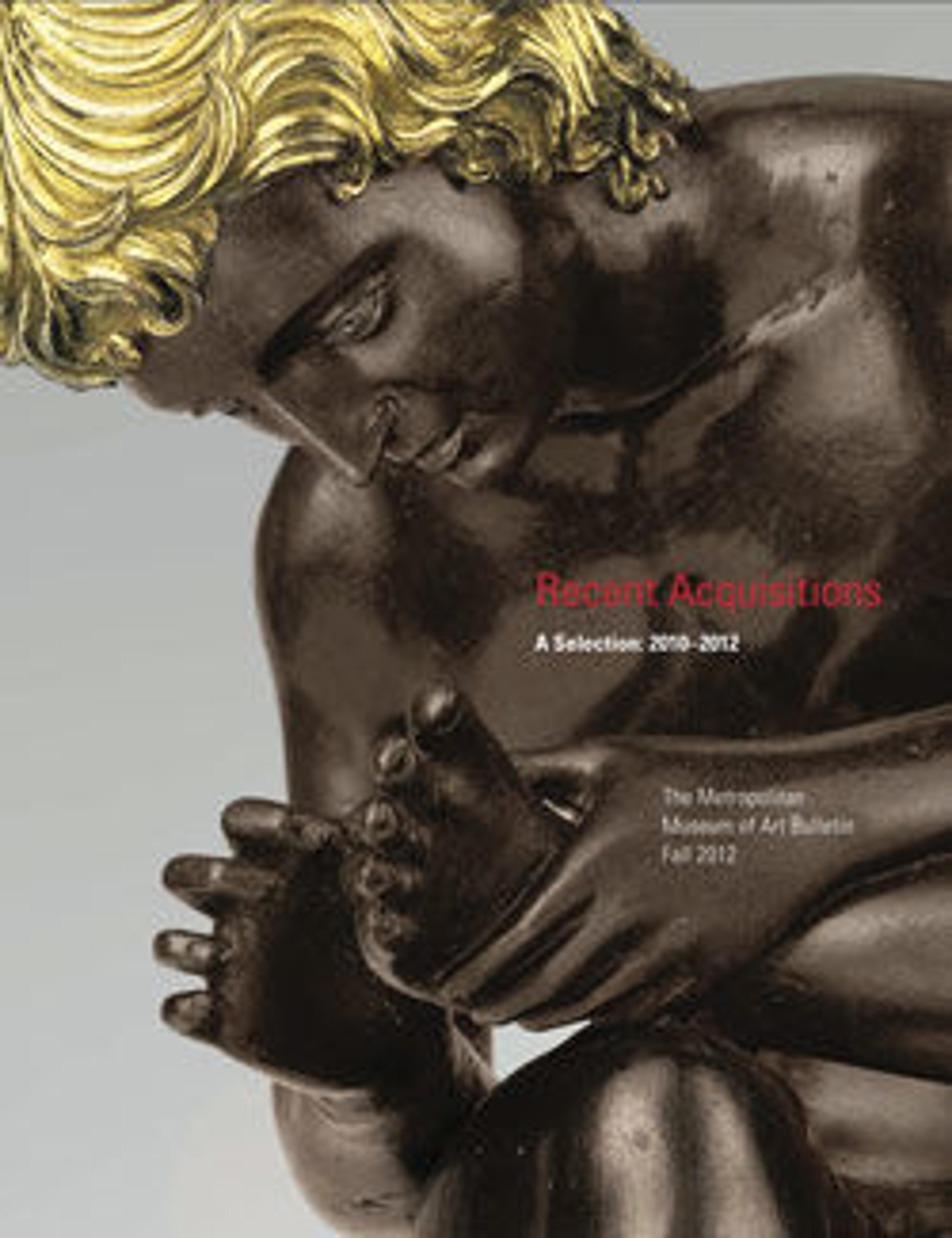Celt pendant
The slender celt-form pendants of Central America, worn about the neck on a thong, had a serious presence during the early centuries CE. Carefully crafted of various types of greenstone, of preference a blue-green jadeite indicative of high status, the shape takes its meaning from celts, or axes. Celts were the essential tool of the ancient inhabitants of Central America and Mexico and came to have symbolic import. The most common ornamental celt in Central America was a bird with a tall crest, beady eyes, and a large beak extending down the chest. The same slender format ornamented at the top was used to depict other figures, like this one with a helmet mast encasing its head. A small fat animal sits on top of the figure’s head, large ear flares frame the face, and a long tongue, curled up at the bottom, emerges from the wide mouth. The hands meet at the center, below a chest ornament. Variations on the helmet mask include a fat bird on top of the head instead of an animal and folded wings at the sides instead of arms.
Artwork Details
- Title:Celt pendant
- Artist:Greater Nicoya or Central region artitst(s)
- Date:1–500 CE
- Geography:Costa Rica
- Culture:Guanacaste-Nicoya
- Medium:Jadeite
- Dimensions:H. 7 7/8 × W. 1 3/8 × D. 7/8 in. (20 × 3.5 × 2.2 cm)
- Classifications:Stone-Ornaments, Jade
- Credit Line:Purchase, Stephanie H. Bernheim and Jan and Marica Vilcek Gifts, 2011
- Object Number:2011.364
- Curatorial Department: The Michael C. Rockefeller Wing
More Artwork
Research Resources
The Met provides unparalleled resources for research and welcomes an international community of students and scholars. The Met's Open Access API is where creators and researchers can connect to the The Met collection. Open Access data and public domain images are available for unrestricted commercial and noncommercial use without permission or fee.
To request images under copyright and other restrictions, please use this Image Request form.
Feedback
We continue to research and examine historical and cultural context for objects in The Met collection. If you have comments or questions about this object record, please contact us using the form below. The Museum looks forward to receiving your comments.
